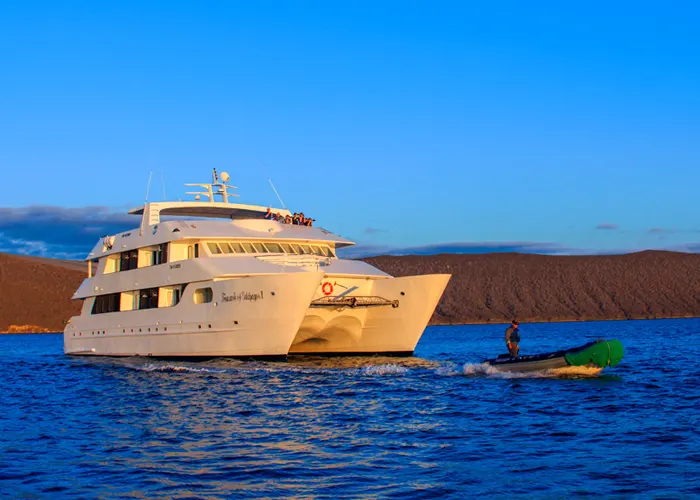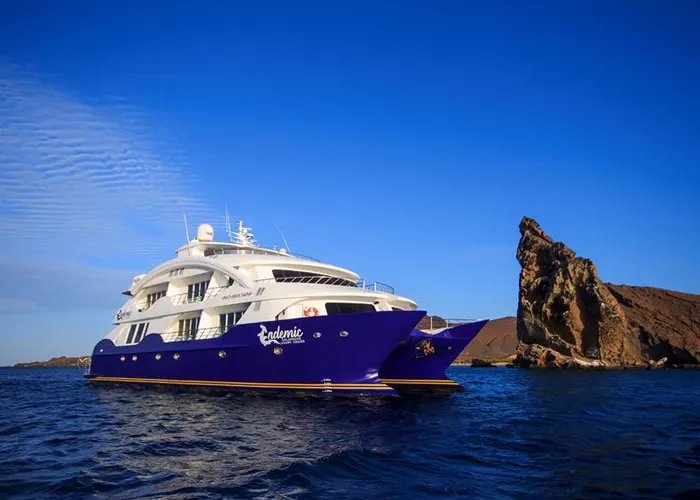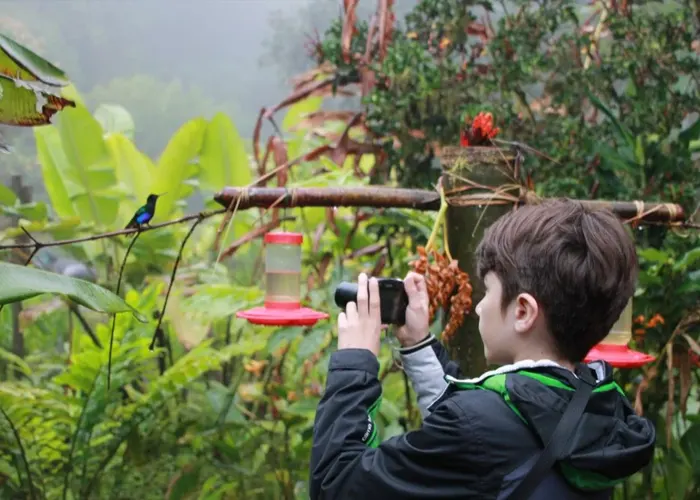Española Island Galapagos
Española island
Discover the Wonder of the Spanish Isle: Nature, History & Fun
- Area: 60 km²
- Highest point: wolf volcano: 1710 m
- Population: uninhabited
- Travel options: Cruise ship
Visitor highlights:
- Gardner Bay with Gardner Islet
- Suarez Point
- Osborn Islet
- Important animals and plants: Sea lions, Galapagos albatross, Española giant tortoises, Darwin’s finches, marine iguanas, Galapagos mockingbirds, fork-tailed gulls, blue-footed and Nazca boobies, sea turtles, colorful tropical fish, and much more.
General information
Española, with approximately 60 km², is one of the smallest Galapagos Islands. Located in the outer southeast of the archipelago, it is geologically the oldest island, as it has moved furthest away from the hotspot. Its age is estimated at about 4 million years. Due to its age, it is also one of the most flattened, as erosion has had more time to influence the landscape formed by the eruptions of the shield volcano.
Due to its isolated location and the fact that it was never inhabited, Española boasts a high diversity of endemic species. Particularly significant is the island’s status as the world’s only breeding ground for the Galapagos Albatross. Due to climate change, illegal fishing, and tourism, the species is now considered endangered, and the national park is working on targeted measures for its protection. The Española Giant Tortoises have already been successfully protected and preserved. Although Española was never inhabited, goats were introduced, posing a threat to the giant tortoises and drastically reducing their population: only 14 individuals were counted on the island in 1960. Through a breeding program on Santa Cruz, nearly 2000 young tortoises have been released on Española, and their population is thriving.
Española is part of many longer cruises. For example, it is visited by the yachts Solaris and Estrella del Mar, the catamaran Archipel I, and the sailing ship Samba. From Santa Cruz, the ship takes approximately 10-12 hours to reach the island.
Places to visit on Española Island
Gardner Bay and Gardner Islet
The beach of Gardner Bay in the northeast of the island is one of the most popular photographic spots in the Galapagos. Stretching over 2 km, its white sand is one of the longest in the archipelago. Not only tourists but also sea lions flock here in small and large groups, sleeping in the sand. While visitors are not allowed to leave the beach and access the island’s interior, there is plenty to discover and observe along the shore. Three species of Darwin’s finches inhabit this area, and the Española Mockingbird is anything but shy, often approaching visitors up close. Larger than its counterparts on other islands, it is the only carnivorous mockingbird species.
The clear turquoise waters among the rocks at the edge of the beach offer excellent snorkeling opportunities, allowing visitors to marvel at the colorful underwater world. Between January and March, it’s even possible to encounter green sea turtles nesting on the beach.
Opposite Gardner Bay, about 50 m from the coast, lies the small rock island of Gardner Islet, another popular snorkeling spot. Here, one is likely to encounter rays, sharks, and colorful tropical fish underwater.
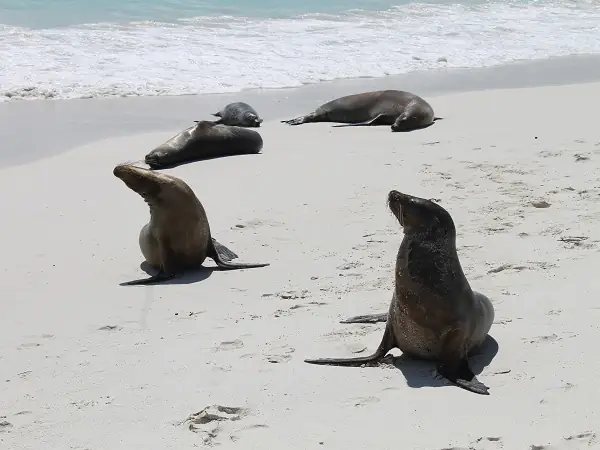
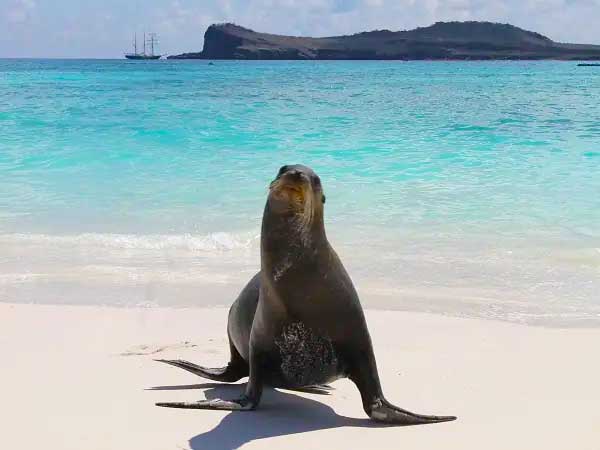
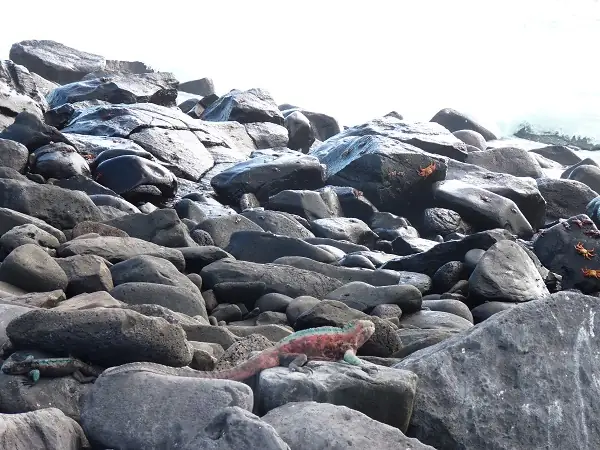
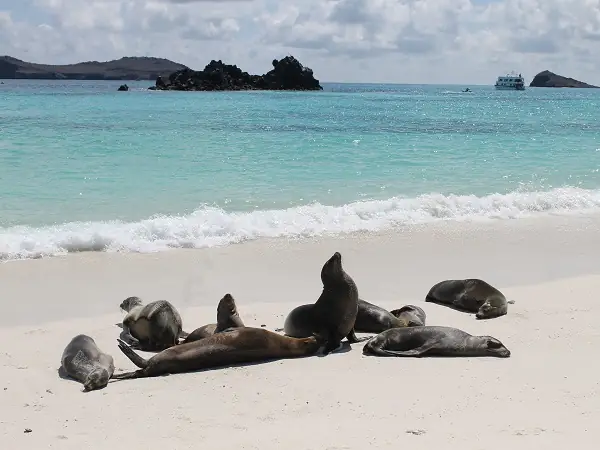
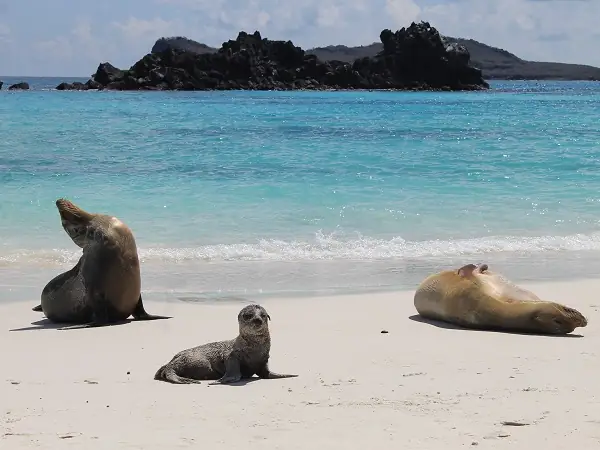
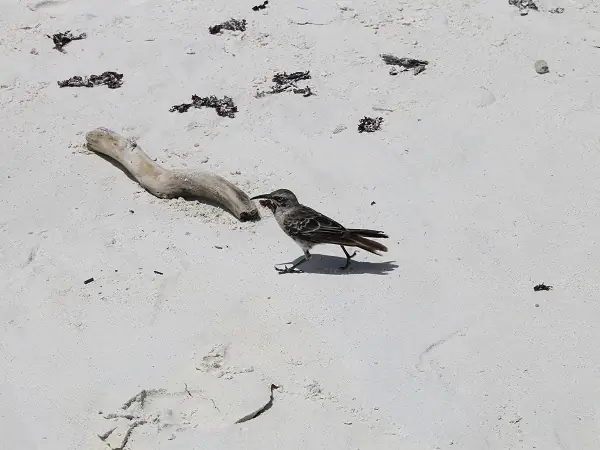
Suarez Point
After a wet landing on the rocks of the west coast of Española, you’ll be greeted by sea lions often lounging so close together that there’s hardly any room to pass by. Colorful marine iguanas and red cliff crabs can also be found on the rocks.
A trail leads past a small beach and salt bushes, where Galapagos hawks, Española mockingbirds, and Darwin’s finches often perch. You’ll also pass colonies of nesting blue-footed and Nazca boobies—be careful not to step on their nests. Swallow-tailed gulls and red-billed tropicbirds are also likely encounters. The path eventually leads to a rock crevice where the tide breaks and shoots up to 30 m high through a blowhole—a truly impressive sight!
Even more impressive is undoubtedly the walk along the breeding colony of waved albatrosses. Nearly the entire world population—25,000 to 30,000—of these birds is found on Española between December and April, during their mating season. If you’re lucky, you might witness their intricate mating dance.
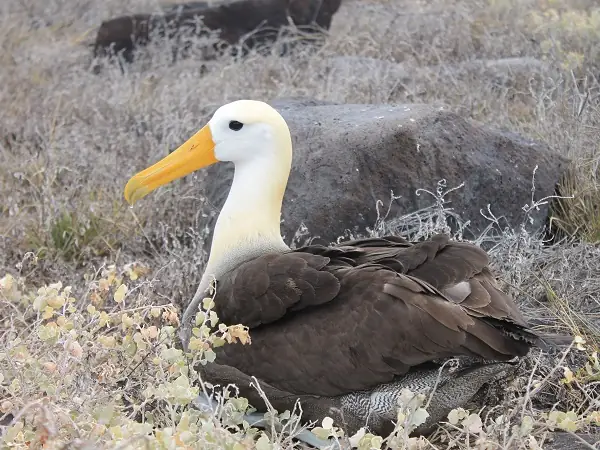
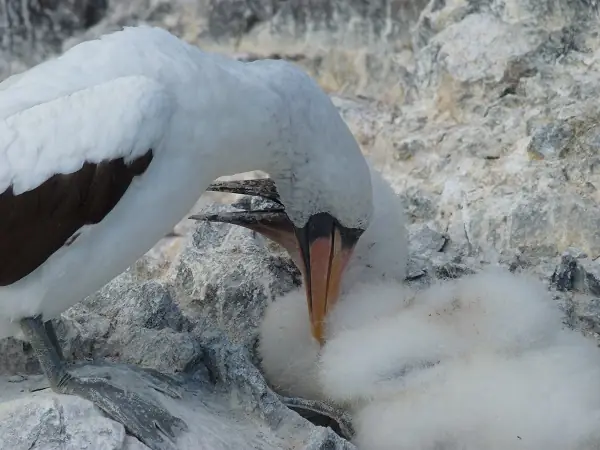
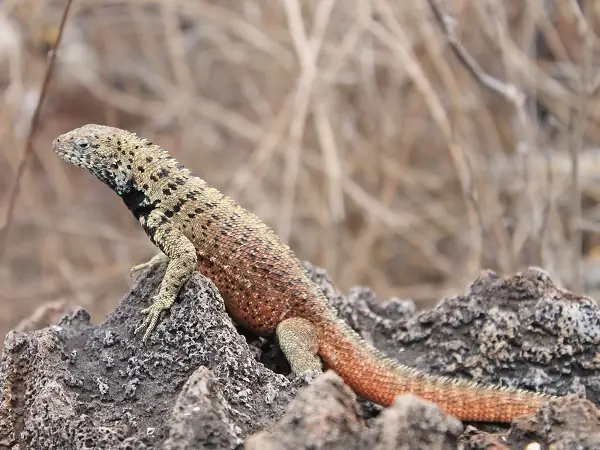
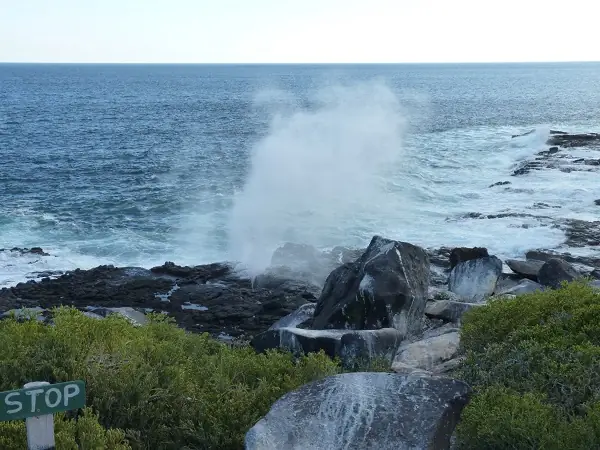
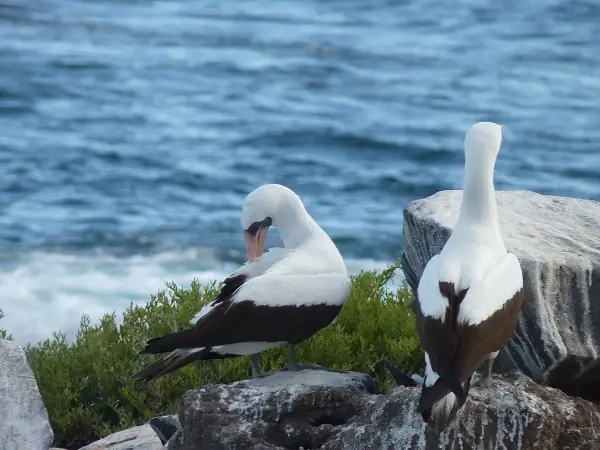
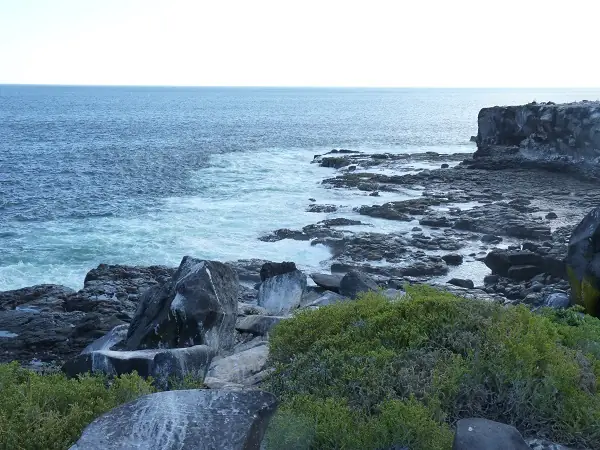
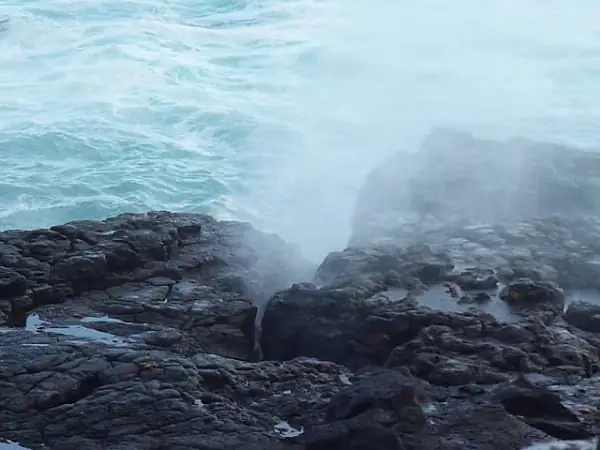
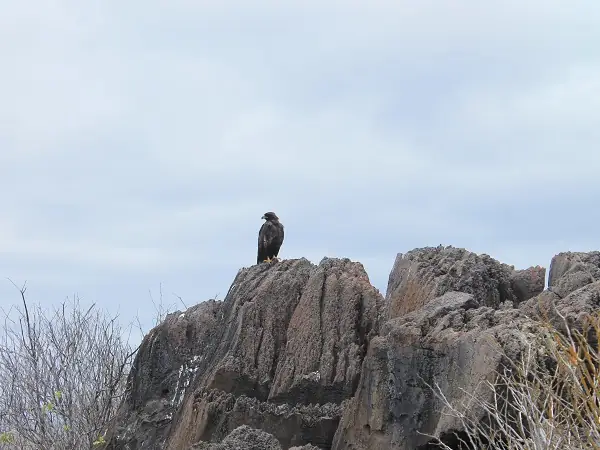
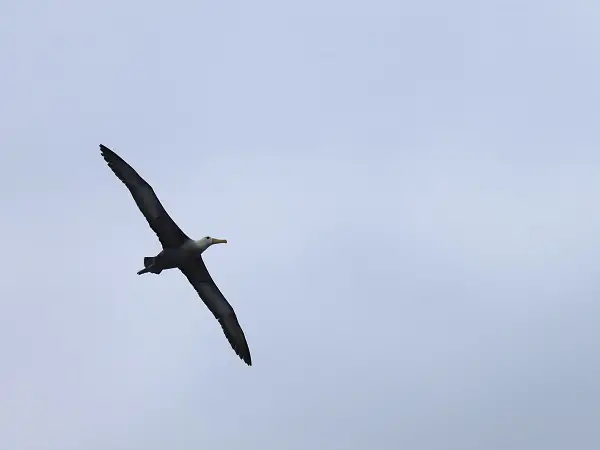
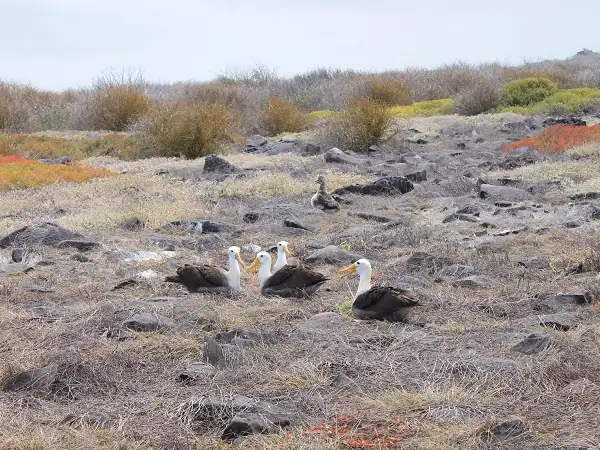
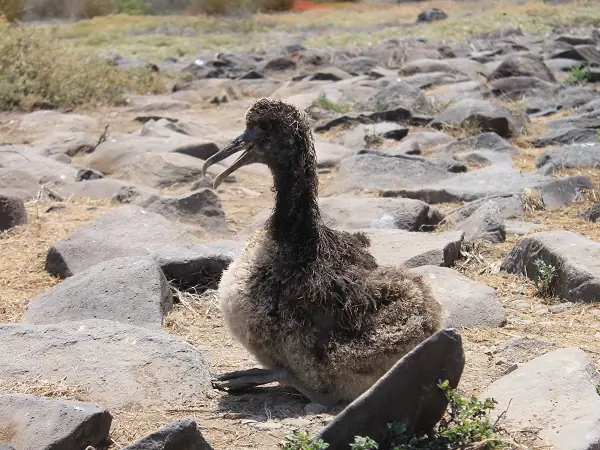
Osborn Islet
Osborn is a small islet southeast of Gardner Bay. There is no possibility of landing, but you can take a panga ride along the coast to observe the seabirds on the rocks and the underwater world. While snorkeling in the calm waters, you will surely discover various colorful tropical fish, as well as parrotfish, sea lions, sea cucumbers, and corals.

